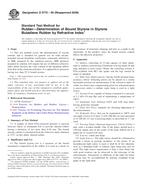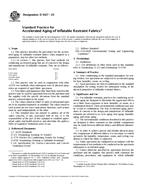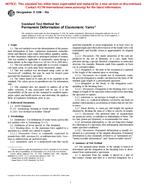1.1 This guide covers procedures for obtaining laboratory data concerning the acute effects of a test material on embryos and the resulting larvae of echinoid embryos (sea urchins and sand dollars) during static 48- to 96-h exposures. These procedures have generally been used with U.S. East Coast (Arbacia punctulata and Strongylocentrotus droebachiensis)
1.2 Other modifications of these procedures might be justified by special needs or circumstances. Although using procedures appropriate to a particular species or special needs and circumstances is more important than following prescribed procedures, the results of tests conducted by using unusual procedures are not likely to be comparable with those of many other tests. The comparison of results obtained by using modified and unmodified versions of these procedures might provide useful information concerning new concepts and procedures for conducting acute tests starting with embryos of echinoids.
1.3 These procedures are applicable to most chemicals, either individually or in formulations, commercial products, or known mixtures. With appropriate modifications, these procedures can be used to conduct acute tests on temperature, dissolved oxygen, and pH and on such materials as aqueous effluents (see also Guide E 1192), leachates, oils, particulate matter, surface waters and sediments (). Renewal tests might be preferable to static tests for materials that have a high oxygen demand, are highly volatile, are rapidly transformed biologically or chemically in aqueous solution, or are removed from test solutions in substantial quantities by the test chambers or organisms during the test.
1.4 Results of acute toxicity tests with echinoid embryos should usually be reported as the 50 % effect concentration (EC50) based on the total abnormally developed embryos and larvae. In some situations, it might only be necessary to determine whether a specific concentration is acutely toxic to embryos or whether the EC50 is above or below a specific concentration.
1.5 This guide is arranged as follows:
1.6 The values stated in SI units are to be regarded as the standard.
1.7 This standard does not purport to address all of the safety concerns, if any, associated with its use. It is the responsibility of the user of this standard to establish appropriate safety and health practices and determine the applicability of regulatory limitations. Specific precautionary statements are given in Section 7.
Product Details
- Published:
- 04/01/2004
- Number of Pages:
- 22
- File Size:
- 1 file , 410 KB


